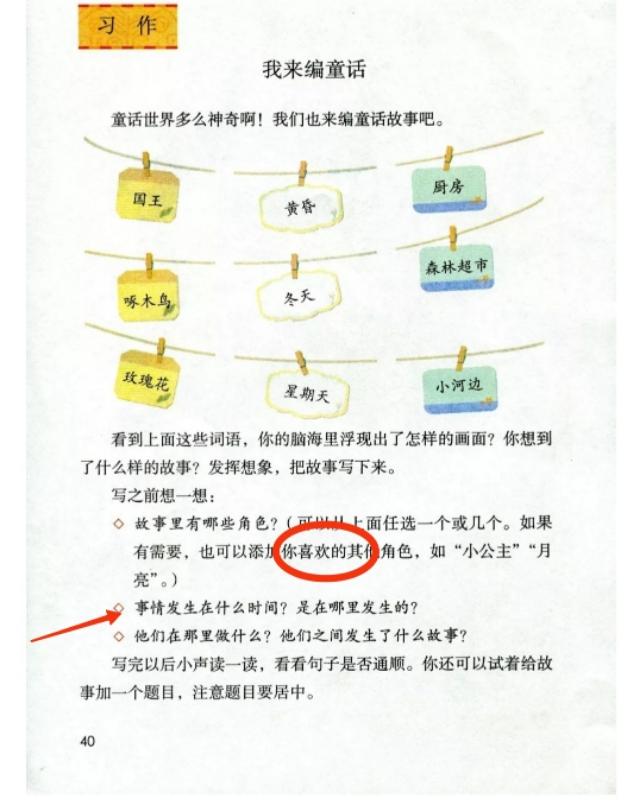初中英語作文怎么寫才能拿高分?

這里整理了一份初中英語作文寫作技巧及模板(可下載)
掌握這份干貨的技巧,寫作框架不成問題!另外,下面還有不同類型的范文模板可以套用
資料有點多,建議先收藏
點擊下方鏈接立即獲得更多資料!
好學熊資料庫:初中全科學習資料下載方式(含全科知識點總結、試卷等)?zhuanlan.zhihu.com/p/124820262?utm_source=com.tencent.mtt&utm_medium=social&utm_oi=766610958985469952(資料整理不易,可以收藏和轉發給有需要的同學哦)
五個步驟寫好中考英語作文
一、認真審題,確定時態人稱,同時關注題材格式
時態:故事性文章一般用過去時,其中表達感受時可用現在時。說明性或議論性文章一般用現在時,舉例時可用過去時。
根據題目要求也會出現時態的交錯使用,如過去和現在的對比等。
如果句中出現了時間狀語,時態則要遵循時間狀語。
如ago,last…——過去時
next,in…——將來時等
人稱:注意在句子中人稱的統一。
例如:Thanks to the teachers, we have improved our English。
其中we和our就是人稱的統一。
格式:注意書信格式的開頭和結尾。
二、找全信息點,緊扣主題,突出重點
切忌只看表格中或所列1、2、3中的信息點。一定把題讀全,找齊信息點,建議用鉛筆標出,寫完后再涂掉。
根據題目,可適當增加合理內容。特別注意文章要有開頭和結尾。
三、成文時表述正確,文字流暢
切忌與漢語提示的一一對應,使用所學表達方法將語義表達出來即可。
首先考慮句子結構(如主謂賓,主系表等)。同時注意短語的正確使用和單詞的拼寫,最好使用課本上學過的短語和句式。
四、文章結構清晰,重點句型出彩,可使文章在得分上提高一個檔次
考慮文章的篇章結構,使用適當的連接短語,使文章結構緊湊。
常用連接詞:
1.表文章結構順序:First of all,Firstly/First,Secondly/Second And then,Finally,In the end
2.表并列補充關系的:What ismore,Besides,Moreover,Furthermore,In addition
3.表轉折對比關系的:However,On the contrary,but
Although+clause( 從句),In spite of+n/doing,On the one hand…,On the other hand…
Some…,while others…
4.表因果關系的:Because,As,So,Thus,Therefore,As a result
5.表換一種方式表達:In other words
6.表進行舉例說明:For example,句子;For instance,句子;such as+n/doing
7.表陳述事實:In fact
8.表達自己觀點:As far as I know,In my opinion
9.表總結:In short,In a word,In conclusion,In summary文中正確使用兩三個好的句型,如:賓語從句、狀語從句、動名詞做主語等。
賓語從句舉例:I believe Tianjin will be more beautifulandprosperous。
狀語從句舉例:If everyone does something for the environment, ourhometown will become clean and beautiful。
動名詞做主語舉例:Reading books in the sun is bad for our eyes。
It’s bad for our eyes to read books in the sun。
常用狀語從句句型:
1)時間when,not…until,as soon as
2)目的so that+clause;to do( 為了)
3)結果so…that+clause,too…to do(太……以至于……)
4)條件if,unless(除非),as long as(只要)
5)讓步though,although,even though,even if
no matter what/when/where/who/which/how
6)比較as…as…,not so…as…,than五、認真檢查,檢查信息點是否全面,時態、人稱是否一致,句子結構是否清晰,短語使用、單詞拼寫是否準確等。
下面列舉一些在檢查中可發現的錯誤:
1.We live more and more comfortable。
改正:comfortably(副詞修飾動詞)
2.we can get many informations by reading newspapers。
改正:much information
(不可數名詞由much修飾)
3.There has many programs in TV。
改正:There are many programs on TV。
(There be句型和介詞短語)
4.I think ride a bike can keep our health。
改正:I think riding a bike can keep us healthy。(動名詞作主語)
建議大家練習或模仿不同題材的文章,特別注意改錯總結和吸取范文中好的結構與表達方法,適當運用于自己的文章中。
作文復習詞匯
描寫人物時,要生動具體,例如:
1) 外表特征:tall, short, fat, thin, strong, weak, ordinary-looking 等。
2) 服飾顏色:red, yellow, blue, white, green, brown, black 等。
3) 內心境界:glad, happy, sad, excited, anxious, interested 等。
4) 感情描寫:love, like, hate, feel, laugh, cry, smile, shout 等。
5) 動作描寫:come, go, get, have, take, bring, fetch 等。
上下文要連貫。上下文的連貫性也是評分的一條原則,因此同學們應把寫好的句子,根據故事情節,事情發生的先后次序(時間或空間),使用一些表示并列、遞進等過渡詞進行加工整理,使文章連貫、自然、流暢。同學們應注意下面過渡的用法:
1) 表示并列關系的過渡詞:and, as well as, or …
2) 表示轉折關系的過渡詞:but, yet, however …
3) 表示時間關系的過渡詞:first, second, third, and then, finally, after, before, after a few days, at last, at that time, later, in the past, immediately, in the meanwhile, when, while, then, after that …
4) 表示空間關系的過渡詞:near (to), far (from), in the front of, beside, behind, beyond, above, below, to the right, to the left, on one side, on the other side of, outside …
5) 表示比較關系的過渡詞:in the same way, just like, just as …
6) 表示對照關系的過渡詞:but, still, yet, however, on the other hand, in spite of, even though …
7) 表示遞進關系的過渡詞: also, and, then, too, in addition, moreover, again …
8) 表示因果關系的過渡詞:because, since, then, thus, otherwise, so, therefore ,as a result…
9) 表示解釋說明的過渡詞:for example, in fact, in this case, for, actually …
10) 表示強調的過渡詞:in fact, indeed, necessarily, certainly, without any doubt, truly, most important …
11) 表示目的的過渡詞:for this reason, for this purpose, so that, in order that, so as to, in order to, …
12) 表示列舉的過渡詞:for example , such as …
13) 表示總結性的過渡詞:finally, at last, in a word, in general, in all, in a word, generally speaking …
數字: first(第一) second(第二) third(第三) ninth(第九) twelfth(第十二) twenty(二十)≡twentieth(第二十)<把y 變成i> 依次類推≡ thirtieth(第三十) fortieth(第四十)。。。。。。
月份:January(一月) February(二月) April(四月)August(八月)September(九月) October(十月) November(十一月) December(十二月)
星期:Sunday, Monday, Tuesday, Wednesday, Thursday, Friday, Saturday
成功:success(名)---successful(形)---successfully(副)---succeed(動)
The launch of Shenzhou ⅴis a great success. He succeeded in solving the problem.
The film is very successful.
死:die(動)---dead(形)---death(名)
He died 10 years ago. The man was found dead in his home yesterday.
The death of my dog made me sad.
幸運:luck(名)—lucky(形)---luckily(副)
Good luck with you! You are lucky to pass the exam. Luckily, he wasn’t badly hurt.
危險:danger(名)—dangerous(形) The girl is in danger. It’s dangerous to play with fire.
反義詞:Possible—impossible(不可能); polite—impolite(不禮貌); correct---incorrect(不正確); active—inactive(消極); fair—unfair(不公平); care—careless(粗心); kind—unkind
中考英語寫作技巧匯總
(一)掌握技巧:
(1)注意篇章結構,合理布局 一般為三段式
開始部分(openingparagraph)——說出文中的要點、核心問題。
正文部分(Bodyparagraphs)——圍繞主題開展敘述、討論。
結尾部分(concludingparagraphs)——對全文的總結和概括。
要做到全文中心突出、段落之間必須是有機地聯系,內容完整、連貫。前后呼應,祛除與主題無關的內容。
(2)確定主題句
主題句是對全文的概括,是文章的主旨。它能在文章中起到“畫龍點睛”的作用。通常主題句出現在一篇文章的開頭,而后,全文對主題句所提出的內容進行解釋,擴展。
寫主題句應注意以下幾點:
①歸納出你要寫的文章的幾個要點
②提煉出一句具有概括性的話
③主題句應具有可讀性,抓住、吸引讀者。
(二)巧用連接詞
要想使文章有整體性、連貫性,就要學會正確使用連接詞
(三)掌握常用句型:
下面只列舉比較常用的。
http://1.in order to 為了實現他的夢想,他學習非常努力。
He worked very hard in order to ealize his dream.
3.so…that 他們太累了,除了伸懶腰什么都做不了。
They were all so tired that they could do nothing but yawn.
5.would rather…than 他寧愿聽他人講而不愿自己說。
He would rather listen to others than talk himself.
8.not only…but also 在短短的三年的時間里她不但完成了所有課程,而且還獲得了博士學位。
In just three years, she had not only finished all the lessons , but also received her doctor’s degree.
9.either…or 如果考試過關,你可以買一個MP3或去云南玩一趟。
You could either buy an MP3 or go to Yunnan for a visit if you pass the exam. 、
10.Neither…nor 他是一個無聊的人,既不愛娛樂,也不愛讀書。
He is a boring man. He likes neither enter tainment nor reading.
11.as well as 他善良又樂于助人。
He was kind as well as helpful.
12.…as well 這個小孩活潑又可愛。
The child is active and funny as well.
13.One…the other 你看見桌子上有兩只筆嗎?一支是紅色的,另一支是黑色的。
Have you seen two pens on the desk? One is red, the other is black.
14.Some…others 每個人都很忙,有些在讀書,有些在寫作。
Every one is busy in classroom. Some are reading, others are writing.
16.not…until 直到他告訴我發生的事,我才了解真相。
I didn’t know the truth until she told me what happened.
19.find it adj to do… 我覺得作聽力時有必要作筆記。
I find it necessary to taked own notes while listening.
如何開篇:
技巧一:主旨設問更給力
I think it’s very important for us to do sports. Why? Because it’s good for our health and study.
I think it’s very important for us to protect environment. Why? Because it’s good for living.
I think it’s very important for us to learn English. Why? Because it’s the most-widely used language in the world.
技巧二:頭文字D----從D開始,從我們到我
Different people have different _____, but/and I have/prefer ______
如何寫正文:
一. 句型變化
擴張原則1:表達觀點要“自我”
In my opinion, we should pay much more attention on the weak subjects!
擴張原則2:兩句之間要過渡
I left my pen at home. What was worse, the drugstore was closed that day.
變形原則3:凡是問題闡述用形容詞句型!!
普通級句型The environment is bad.
比較級句型 The environment is getting much worse than before.
The environment is getting worse and worse
最高級句型 I have never seen the worse environment .
變形原則5:表達作用多用it句式 …is a …way to…
閱讀能幫助我放松自己。Reading is a good way to relax myself.
看電影能幫助我們學習英語。Watching movies is a wonderful way to learn English.
變形原則6:增強情感轉感嘆
閱讀對我們很有益. How beneficial it is for us to read!
作運動對學生很重要. How important it is for students to do sports.
變形原則7:事情到感情句型
It makes sb. feel … that … I was very happy that I got an A in English last term.
It makes me feel happy that I got an A in English last term.
變形原則8:形容詞句型升級:
it is one of the most … It was an unusual experience in my life.
It was one of the most unusual experience in my life.
變形原則12:活用there be結合定從:
Many reasons made me like reading.
There are many reasons why I enjoy reading
列舉式結構: first of all, secondly, besides, whats more, last but not least, For one thing, For another,
三 . 詞匯變化
變化原則1:make 更有feel After doing sports, I feel relaxed.
It makes me feel relaxed to do sports.
I made a progress in English. I feel proud.
It makes me feel proud to make a progress in English.
變化原則2:連詞不再用and
增補 not only…but also…, as well as…
進階 what’ s more/worse , furthermore
轉折 while, however
變化原則3:喜歡不再like—用be fond of, enjoy, be crazy about I am fond of reading books.
變化原則4:凡是提出措施咱盡量不用should!!
用“suppose” 、“had better”,“have no choice but ”, “it’s our duty to ”
如何結尾
1.各種號召--事不宜遲Don’t put it off.
2.各種越--多多益善the+比較級+主謂,the +比較級+主謂 越…就越…
The better we take care of the environment, the more beautiful the world will be.
2. 名言警句
學習類Practice makes perfect.
運動類Rome was not built in a day.
環保類Nothing is impossible to a willing mind .
愛好類Interest is the best teacher.
沒有? 編唄! Once there was a great man said“……”.
議論文結構開頭方式: In my opinion, we, students, are supposed to take more after-class activities!
議點闡述: There are many reasons why I support it! (列舉式)
總結陳述: Above all, it is so obvious that we ... (強調主題!)
一、英語書信的常見寫作模板 開頭部分:
How nice to hear from you again.
Let me tell you something about the activity. I’m glad to have received your letter of Apr. 9th.
I’m pleased to hear that you’re coming to China for a visit.
I’m writing to thank you for your help during my stay in America
三、議論文模板
1.正反觀點式議論文模板
導入:第1段:
Recently we’ve had a discussion about whether we should... (導入話題)
Our opinions are divided on this topic.(觀點有分歧)
正文:第2段:
Most of the students are in favour of it.(正方觀點)
Here are the reasons. First... Second... Finally...(列出2~3個贊成的理由)
第3段:However, the others are strongly against it. (反方觀點)
Their reasons are as follows. In the first place... What’s more... In addition...(列出2~3個反對的理由)
結論:第4段:
Personally speaking, the advantages overweigh the disadvantages, for it will do us more harm than good, so I support it.(個人觀點)
2.“A或者B”類議論文模板:
導入:第1段:Some people hold the opinion that A is superior to B in many ways. Others, however, argue that B is much better. Personally, I would prefer A because I think A has more advantages.
正文:第2段:There are many reasons why I prefer A. The main reason is that ... Another reason is that...(贊同A的原因)
第3段: Of course, B also has advantages to some extent... (列出1~2個B的優勢)
結論:第4段: But if all these factors are considered, A is much better than B. From what has been discussed above, we may finally draw the conclusion that ...(得出結論)
3.觀點論述類議論文模板:
導入:第1段:提出一種現象或某個決定作為議論的話題
As a student, I am strongly in favour of the decision. (亮明自己的觀點是贊成還是反對) The reasons for this may be listed as follows. (過渡句,承上啟下)
正文: 第2段:First of all... Secondly... Besides...(列出2~3個贊成或反對的理由)
結論:第3段:In conclusion, I believe that... (照應第1段,構成"總—分—總"結構)
4."How to"類議論文模板:
導入:第1段:提出一種現象或某種困難作為議論的話題
正文:第2段:Many ways can help to solve this serious problem, but the following may be most effective. First of all... Another way to solve the problem is ... Finally...(列出2~3個解決此類問題的辦法)
結論:第3段:These are not the best but the only two/ three measures we can take. But it should be noted that we should take action to...(強調解決此類問題的根本方法)
一、常見的插入語有形容詞(詞組)、副詞、不定式、現在分詞短語、介詞短語、從句以及固定短語。
1.常見的形容詞(詞組)、副詞作插入語的有:sure enough(果然); strange; worse still(更糟糕的是); most important(最重要的是); honestly; obviously; however; otherwise; luckily; unfortunately; besides; first; second; especially; surprisingly等。
例如: Worse still, the lion could even carry off the baby in its mouth.
We must do the experiment carefully; otherwise youll get another result.
Honestly, I dont need it at the moment. He likes the country, especially in spring
2.常見的不定式有:to tell the truth; to be short(簡單地);to begin with(首先); to be sure(自然、當然、果然);to be honest/frank; to make things worse; to make a long story short; to speak of(值得一提的是),to be fair ,to sum up(概括地說) 等。這些插入語表示說話人的態度,在句子中作獨立成份。
3.常見的介詞短語有:in fact; in addition; in a word; on the other hand; in other words; in ones opinion; in that case; by the way; of course; as a rule(通常);to ones surprise; for example; on the contrary(相反);in a way(在某點上、在某種程度上); for one thing; for another (thing)等。例如:In a way, I think we both won in the game
資料有點多,建議先收藏
點擊下方鏈接立即獲得更多資料!
(資料整理不易,可以收藏和轉發給有需要的同學哦)









